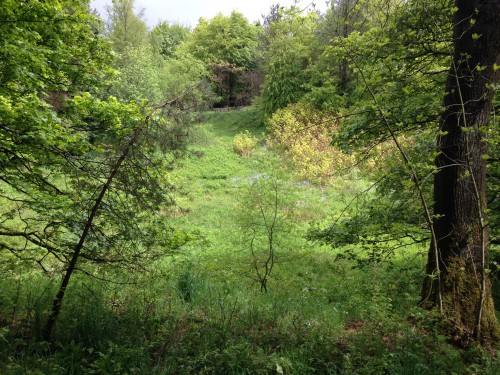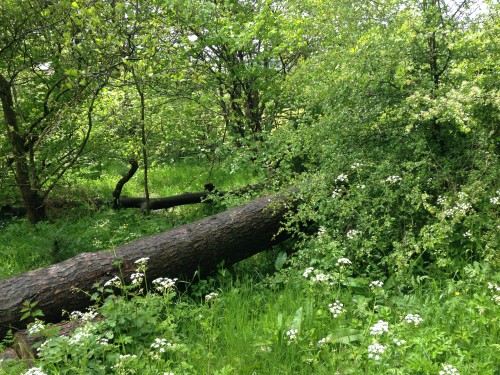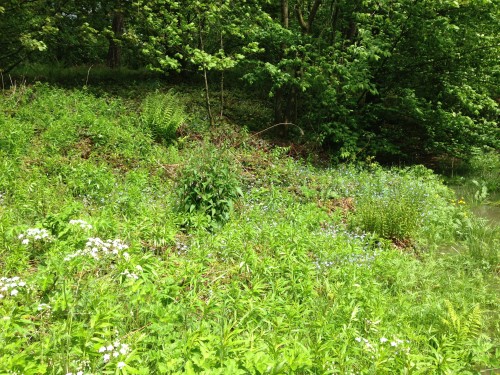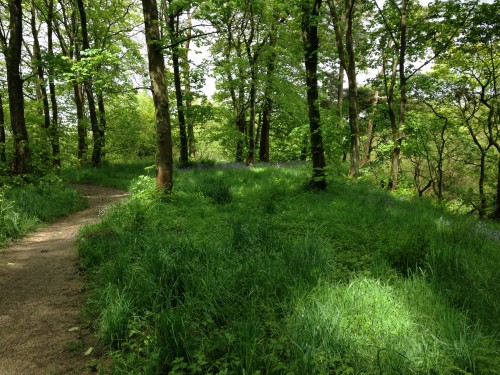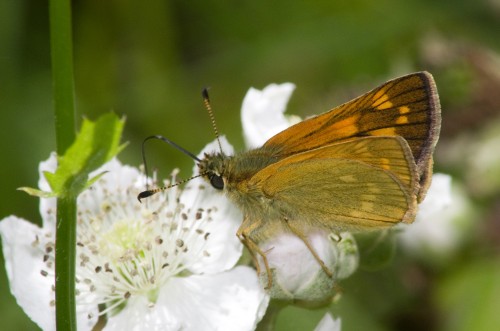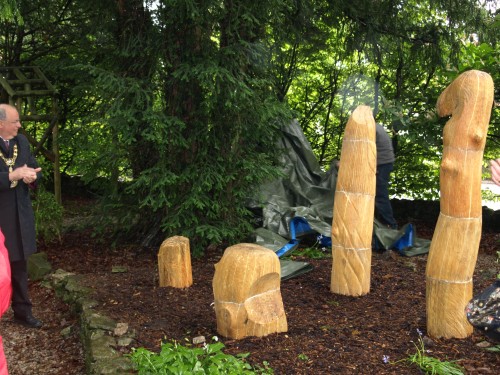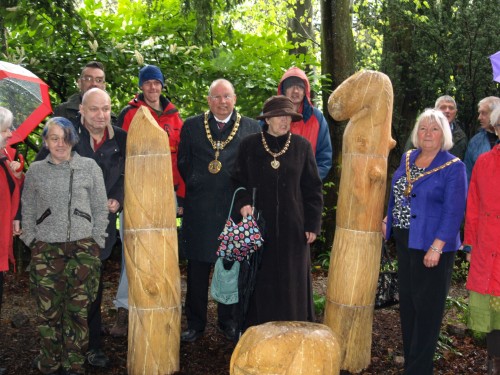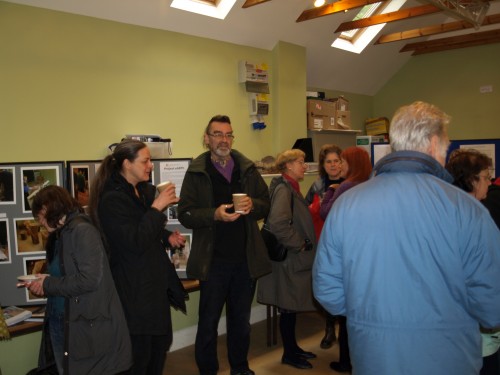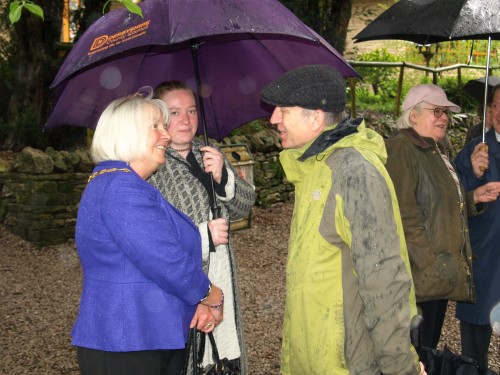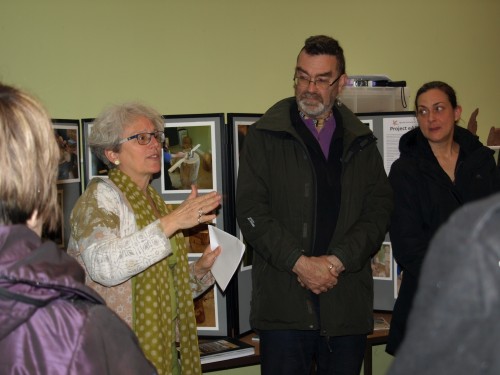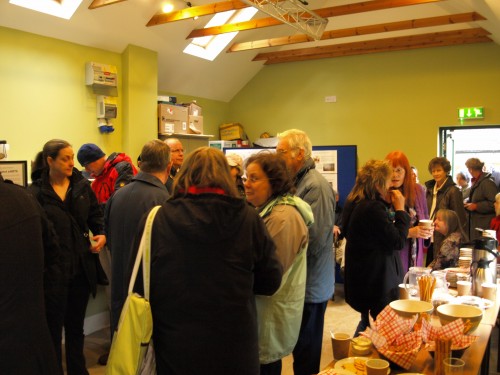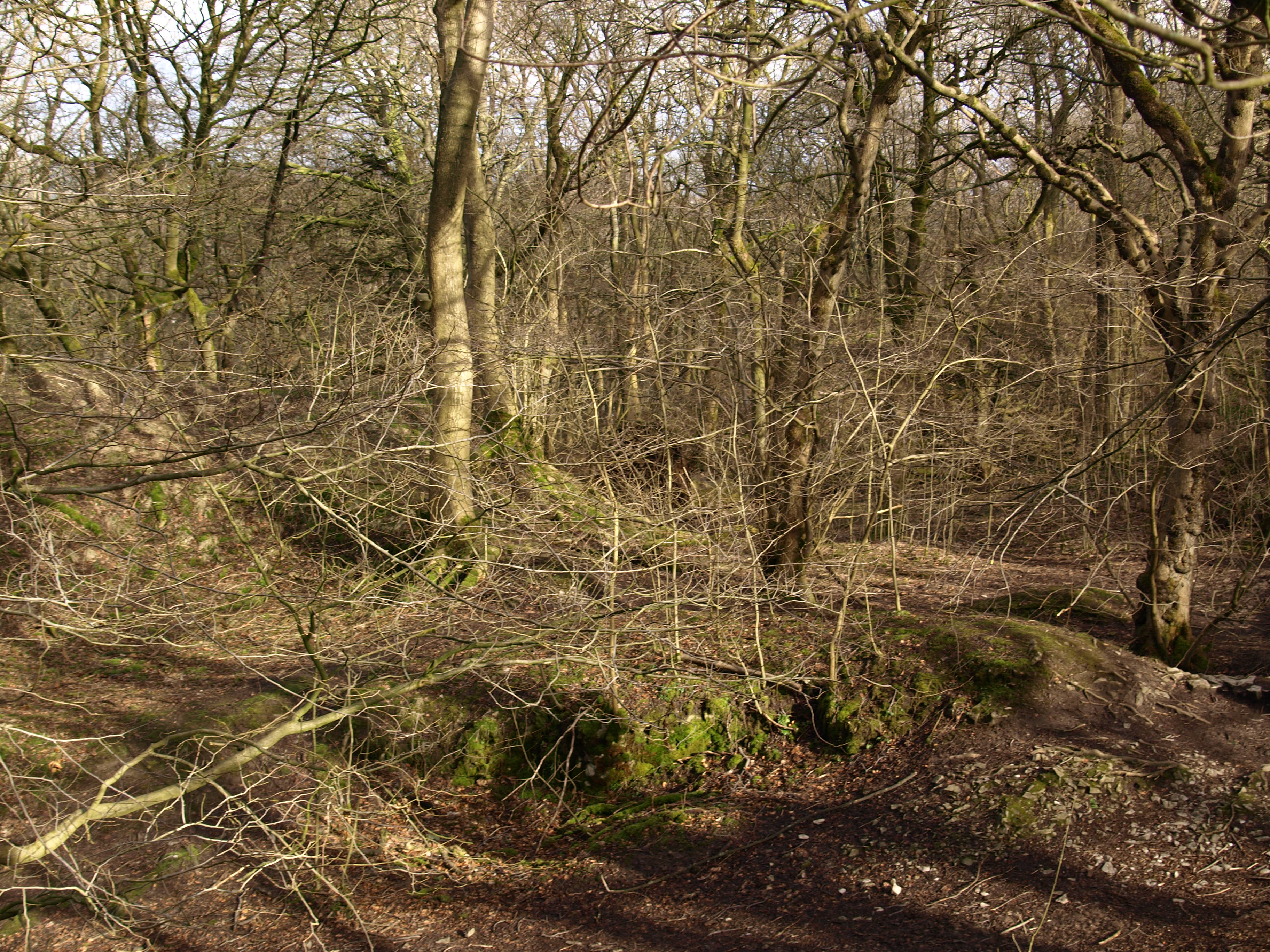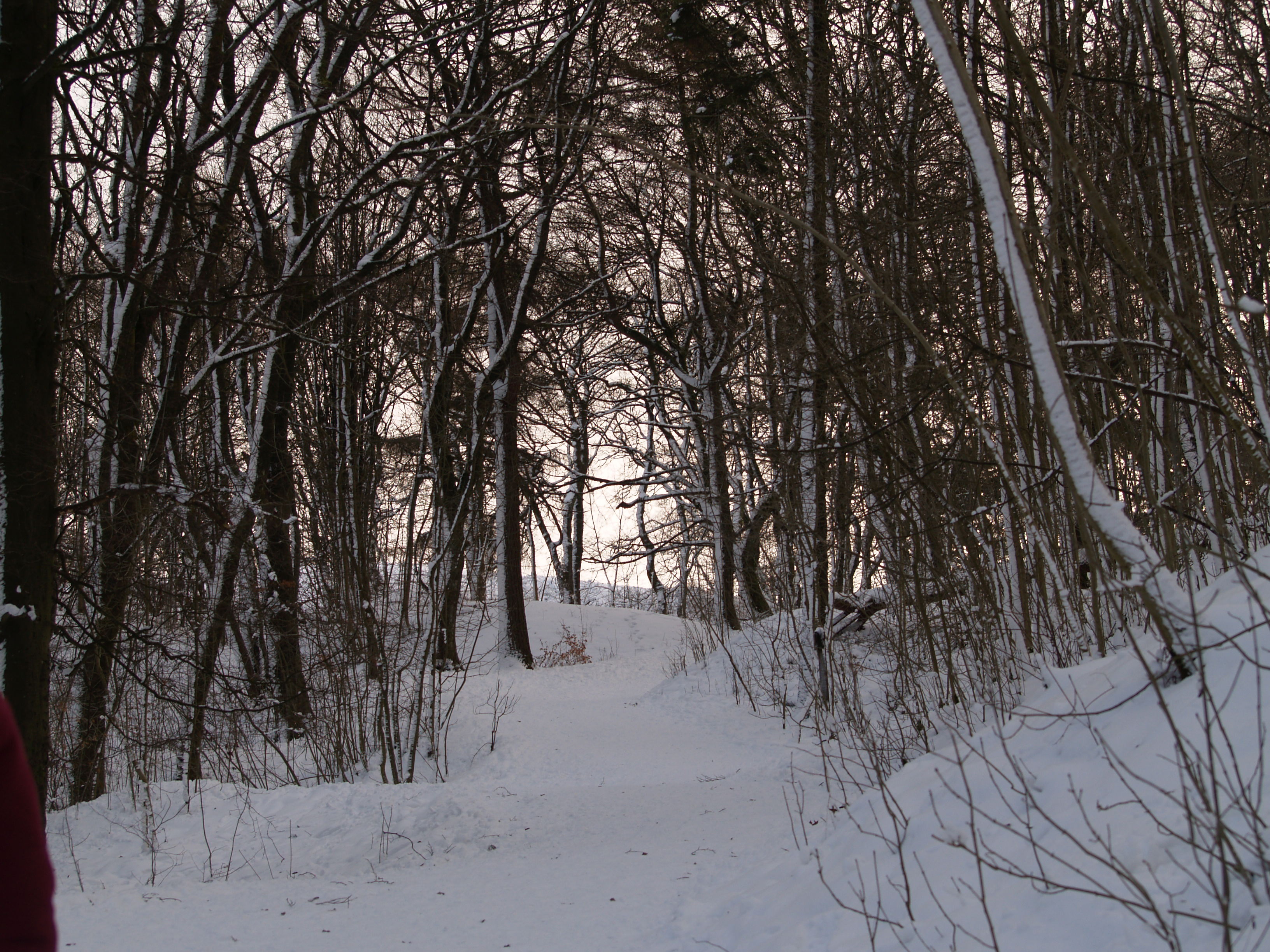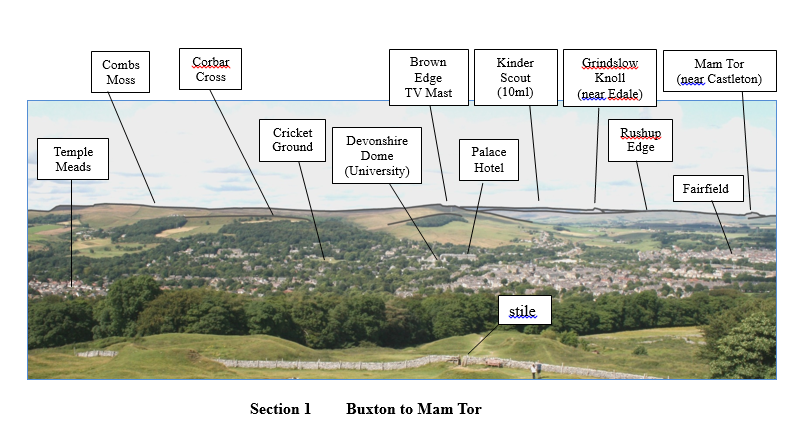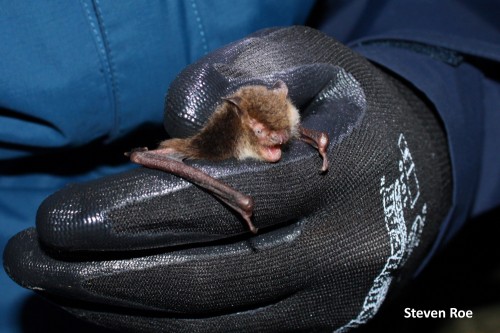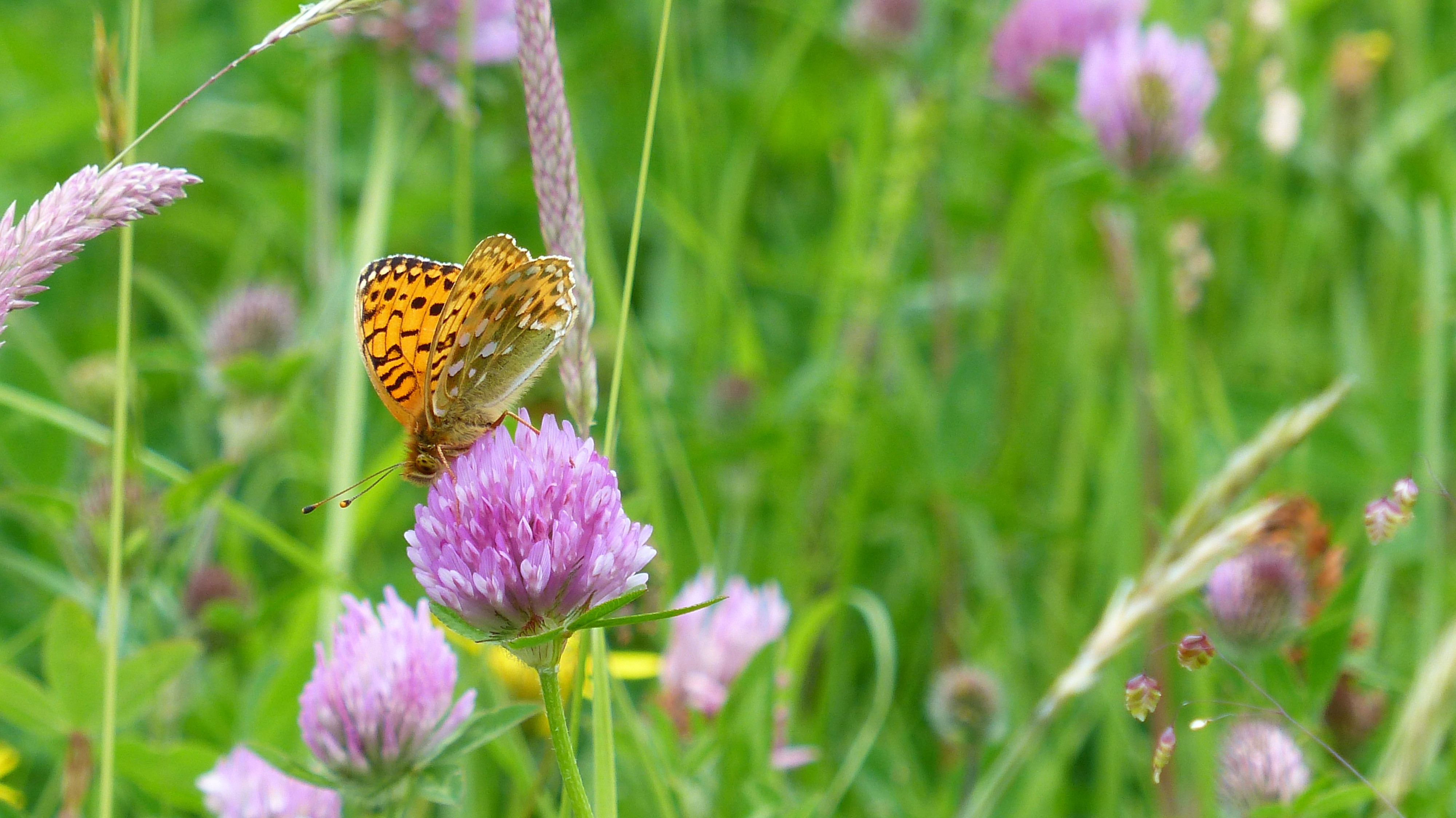
Photograph by Steve Orridge
We have been taking part in the Derbyshire Butterfly Survey, and Steve Orridge has been organising a group of volunteers to carry out a weekly survey in Grin woods. We have attached the latest report for the county wide survey, though at this stage Grin woods do not feature , mainly because the weather has been poor. The report has been compiled from reports across the county by Ken Orpe, the county recorder.
We will be posting these reports on a regular basis and also highlighting the results from Grin woods.
Hi Everyone,
With still no let up in the cold and wet conditions already experienced during May 2015, this has meant that several recorders failed to see even one butterfly on their transects during the last week. Despite this 2 additional butterfly species have managed to defy the odds and emerge recently in the County. First of all Simon Roddis was very surprised to see a fresh Wall Brown in his garden in Darley Dale on the 15th of May 2015 and then on the following day a mint Brown Argus (migrating) was seen by Pat and Ken Orpe at the Stanton Ironworks site, this bringing the May 2015 total to 19 species which is quite a surprise given the very unfavourable weather conditions experienced during the first 3 weeks of this month.
Not surprising but only a few Green Hairstreak sightings have been made during the last week including in Lathkill Dale (Ian White) and at the excellent site in South Derbyshire, namely Stanton Ironworks (Lyn Martin).Similarly only a few Small Copper sightings have been made including Rose End Meadows (Martin Cobham) and Lathkill Dale (Ian White), none of which were noted as being of the ‘blue spotted’ form. Just a handful of sightings of both the Common Blue and Small Heath were made recently including the former species at Stanton Ironworks (Lyn Martin) and the Derbyshire part of Toton Sidings (Brenda Meakin), whilst sightings of the latter species were made at Langley Mill Tip (Colin Penny) and at Stanton Ironworks (Pat & Ken Orpe). Although there have been no further sightings of the Painted Lady in the County recently, it is pleasing to report that Red Admirals were noted at Carsington Water (Brian Romans) and at Buxworth (Damian Hughes) during the last 7 days.
The highlight of the last week has been the number of sightings of the Dingy Skipper including at a new site at Ashbourne Airfield (Trevor Taylor) together with those at known brownfield sites in Lowland Derbyshire including Kilburn Tar Pits (Austin Thomas), Langley Mill Tip/Station (Colin Penny), the Derbyshire part of Toton Sidings (Brenda Meakin & Richard Rogers), West Hallam Tip/Peewit Carr Complex (Pat & Ken Orpe), Stanton Ironworks (Lyn Martin; Pat & Ken Orpe),
Drakelow NR (Tom Cockburn), Williamthorpe NR (Willy Lane), Poulter Country Park (Andy Laking & Shell), Poolsbrook Country Park (Glyn Morris), Barlborough Links (Colin Morris) and the Avenue Washlands, Wingerworth (Sam Ellis). In the Peak District sightings have been made at Cheedale (Steve Orridge) and Rose End Meadows NR (Martin Cobham & James Bradbury)., whilst in the Peak Fringe area, this species was noted at Crich Chase (Ross Pearson) and interestingly in an open area on the woodland walk at Crich Tramway Museum (Ian Hunt).
Finally although not actually to do with Lepidoptera, many recorders enjoy the sight and noise of ‘screaming’ swifts as they swoop around the rooftops of our area having travelled to us from Equatorial Africa. The Derbyshire Wildlife Trust and the Derbyshire Ornithological Society are running a project on Swifts, which is a rapidly declining species. While they have only two and not four wings (!), should you see any flying BELOW roof height or even entering buildings please send full details (including property numbers/street names, post codes) to the survey organiser, Nick Brown nbrown@derbyshirewt.co.uk
Also, recently a definitive book on the Flora of Derbyshire was launched which is the first book on the subject since 1969 and it describes over 1900 plant species that can be found in the County together with over 1100 distribution maps of most of the species. In this connection it is possible to compare food plants of the caterpillars of Lepidoptera with the current distribution maps of particular butterfly species with, for example, Common Rock Rose and the distribution of the Brown Argus in the Peak District. With permission of Nick Moyes, one of the authors, I have attached the distribution map of Common Rock Rose for comparison with the distribution of the said butterfly. It can clearly be noted where the plant has been seen and then it is possible for searches to be made to establish whether the butterfly is also resident in those areas – clearly a challenge if recorders want to contribute to the knowledge of this Peak District speciality butterfly!
If you wish to purchase a copy of this excellent new hardback book, please look for the "Buy The Book" tab here: http://floraofderbyshire.blogspot.co.uk
Regards,
Ken Orpe




